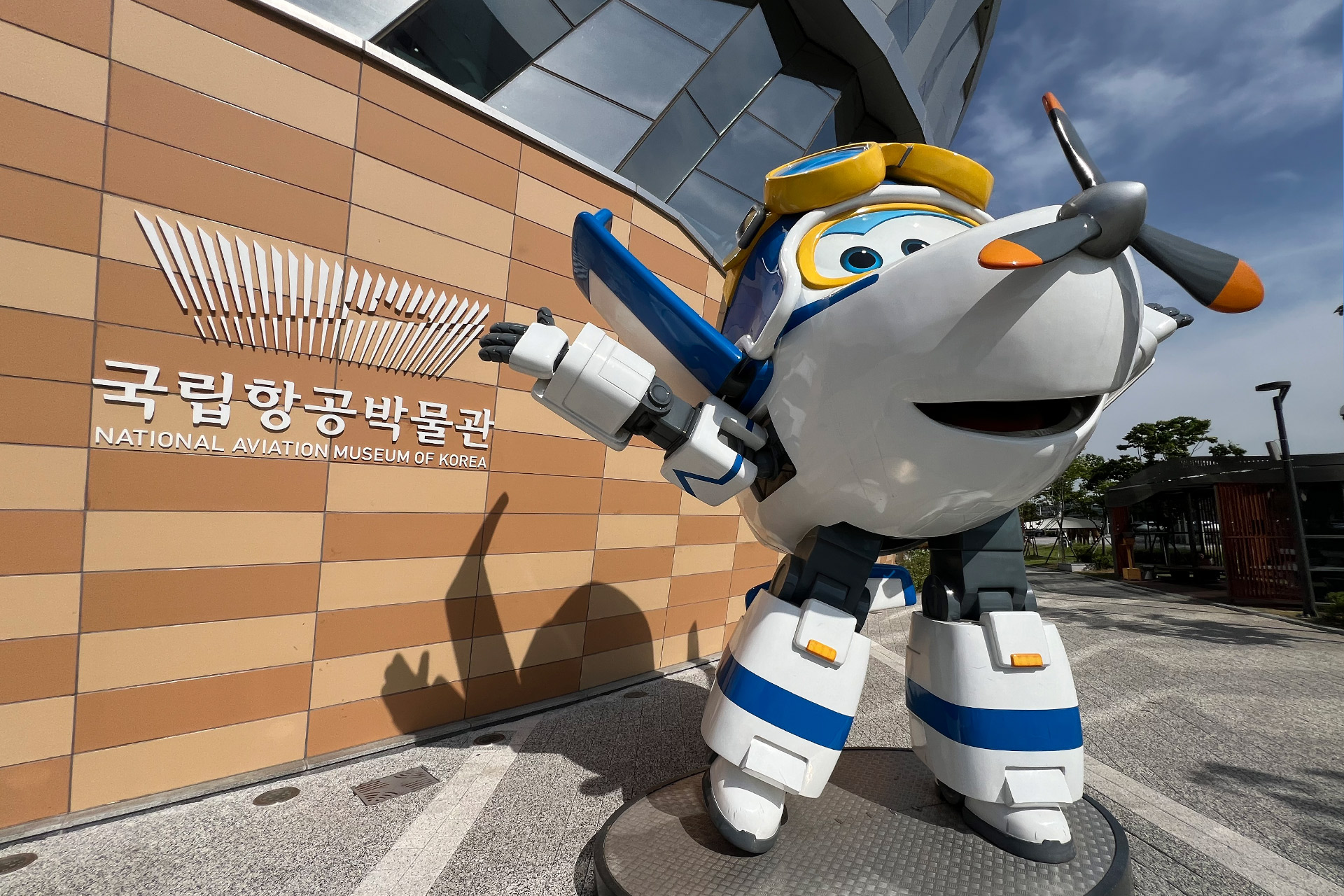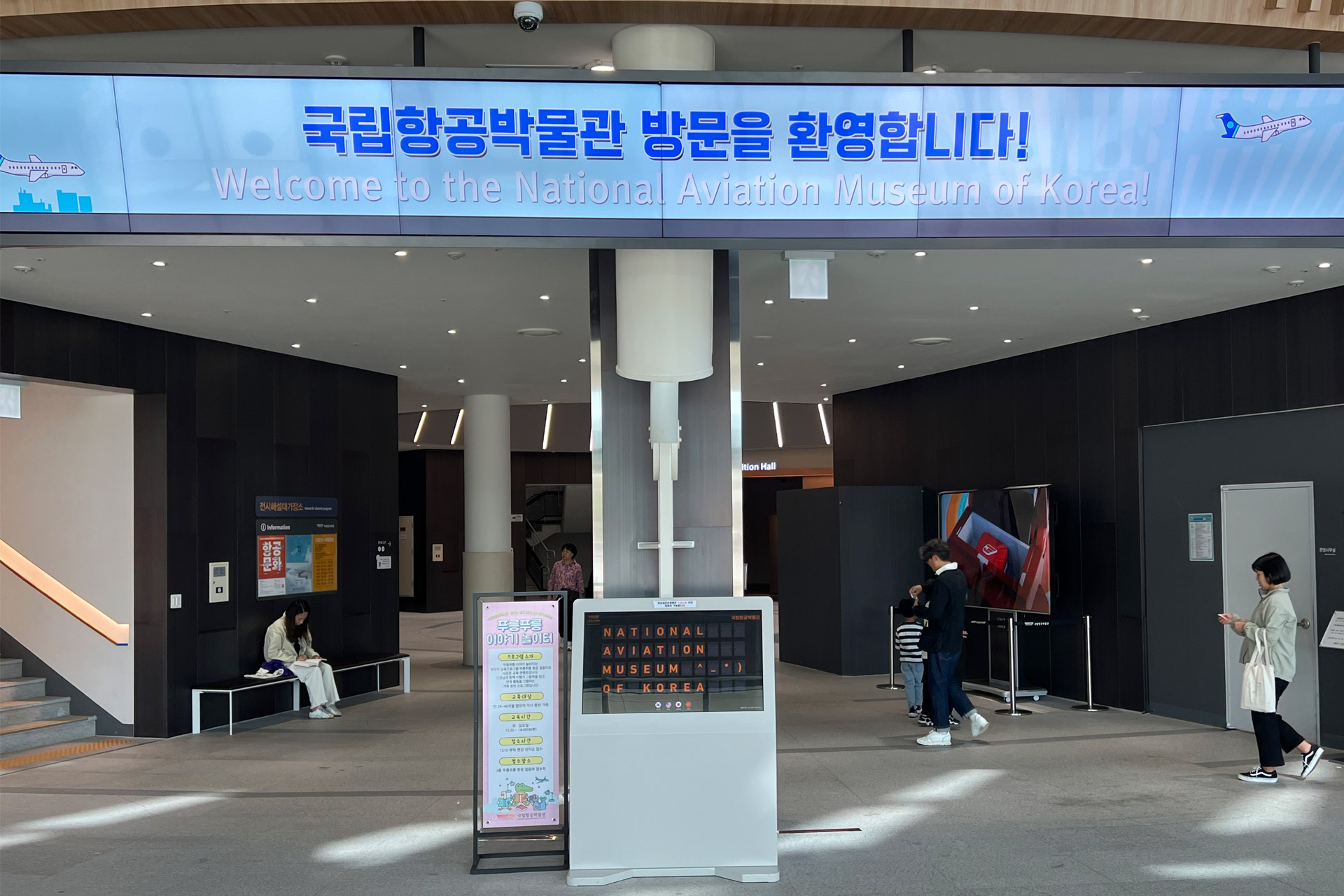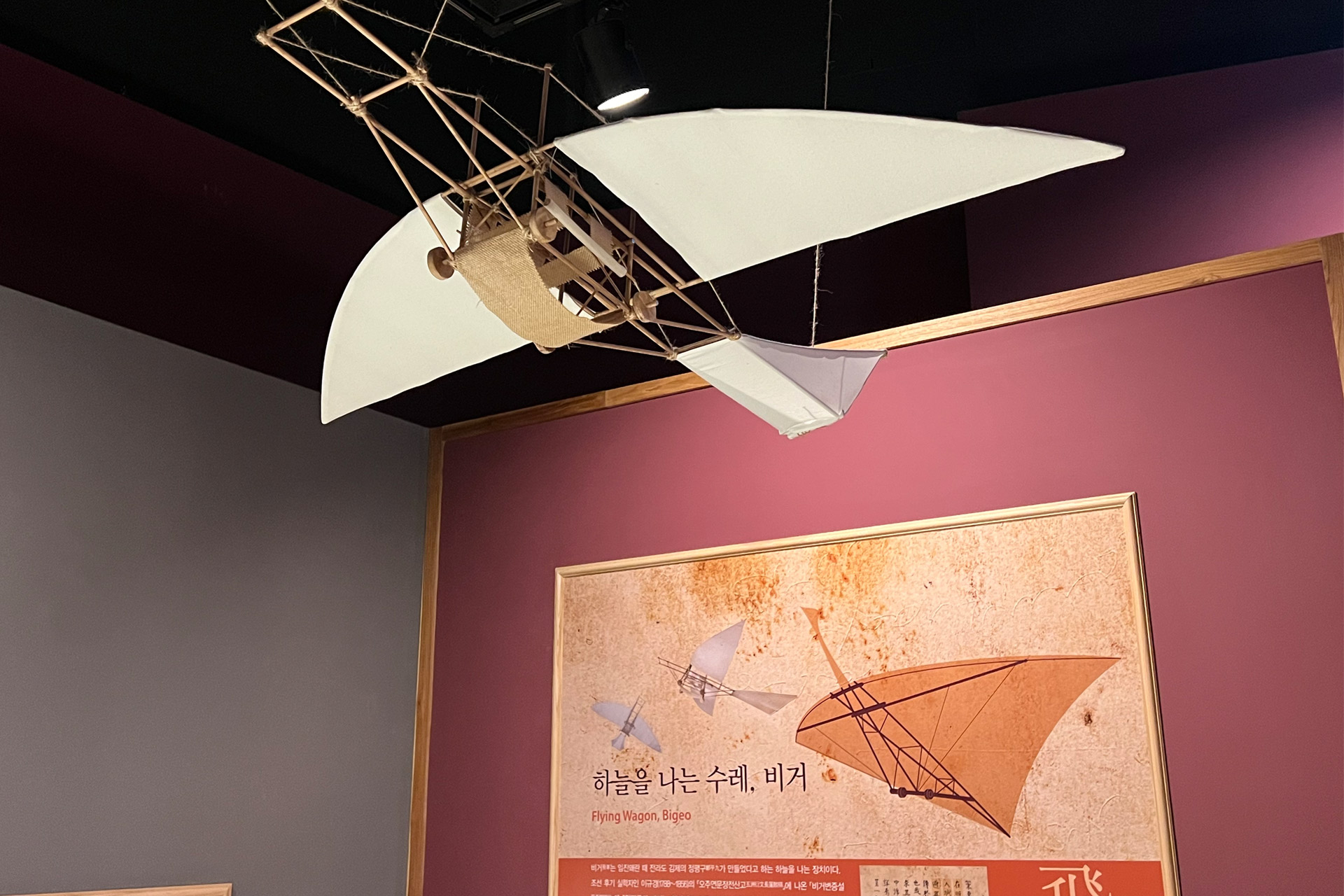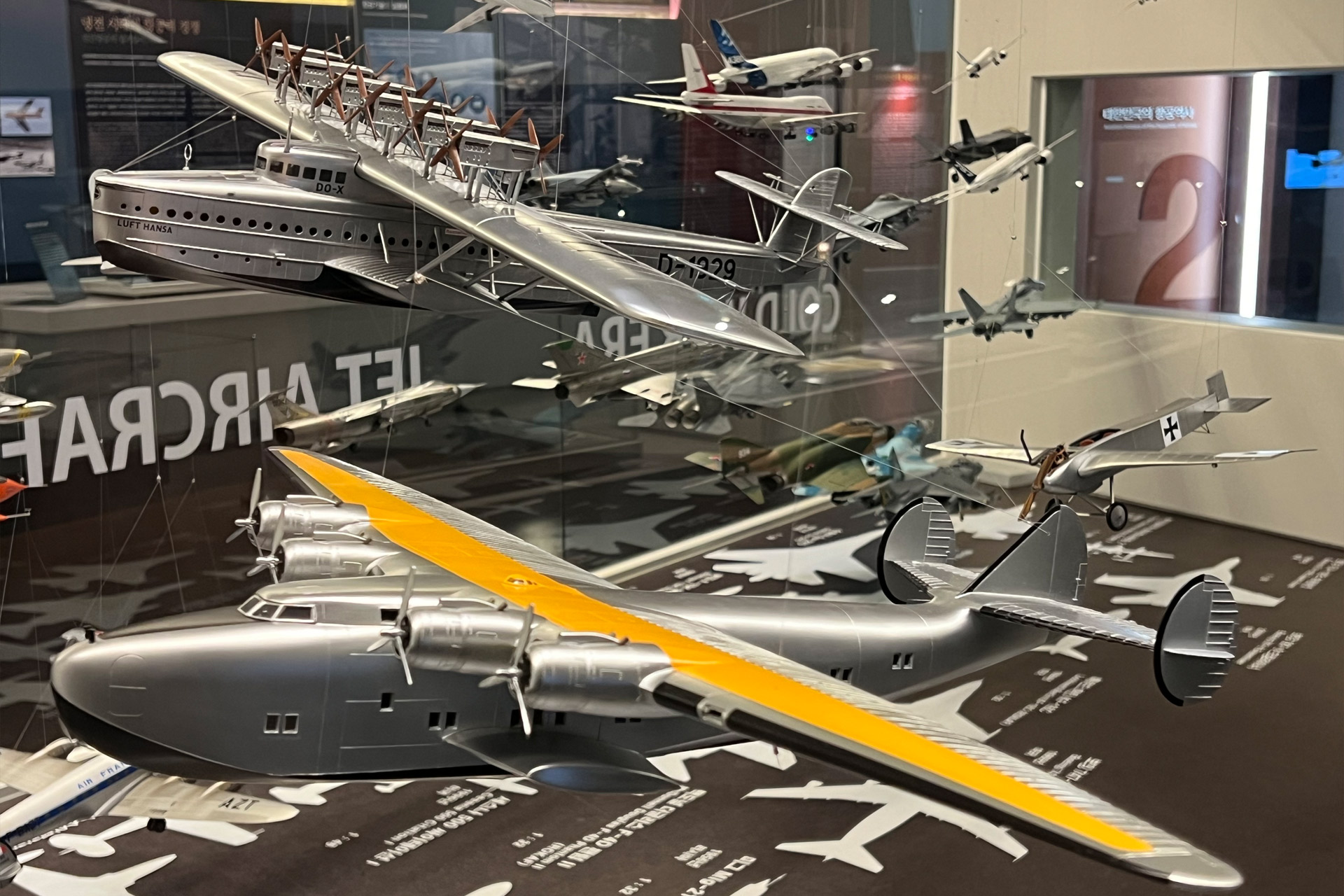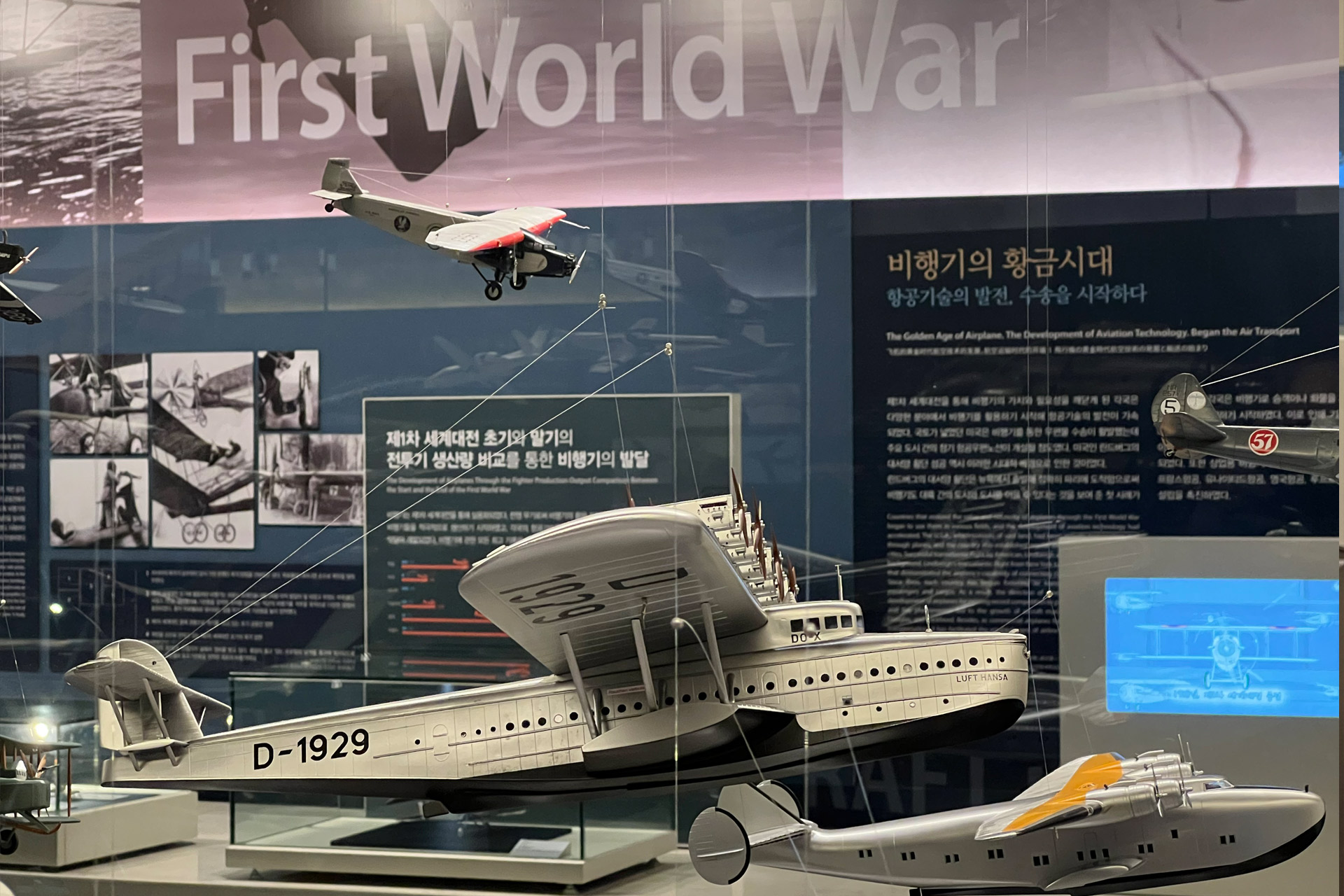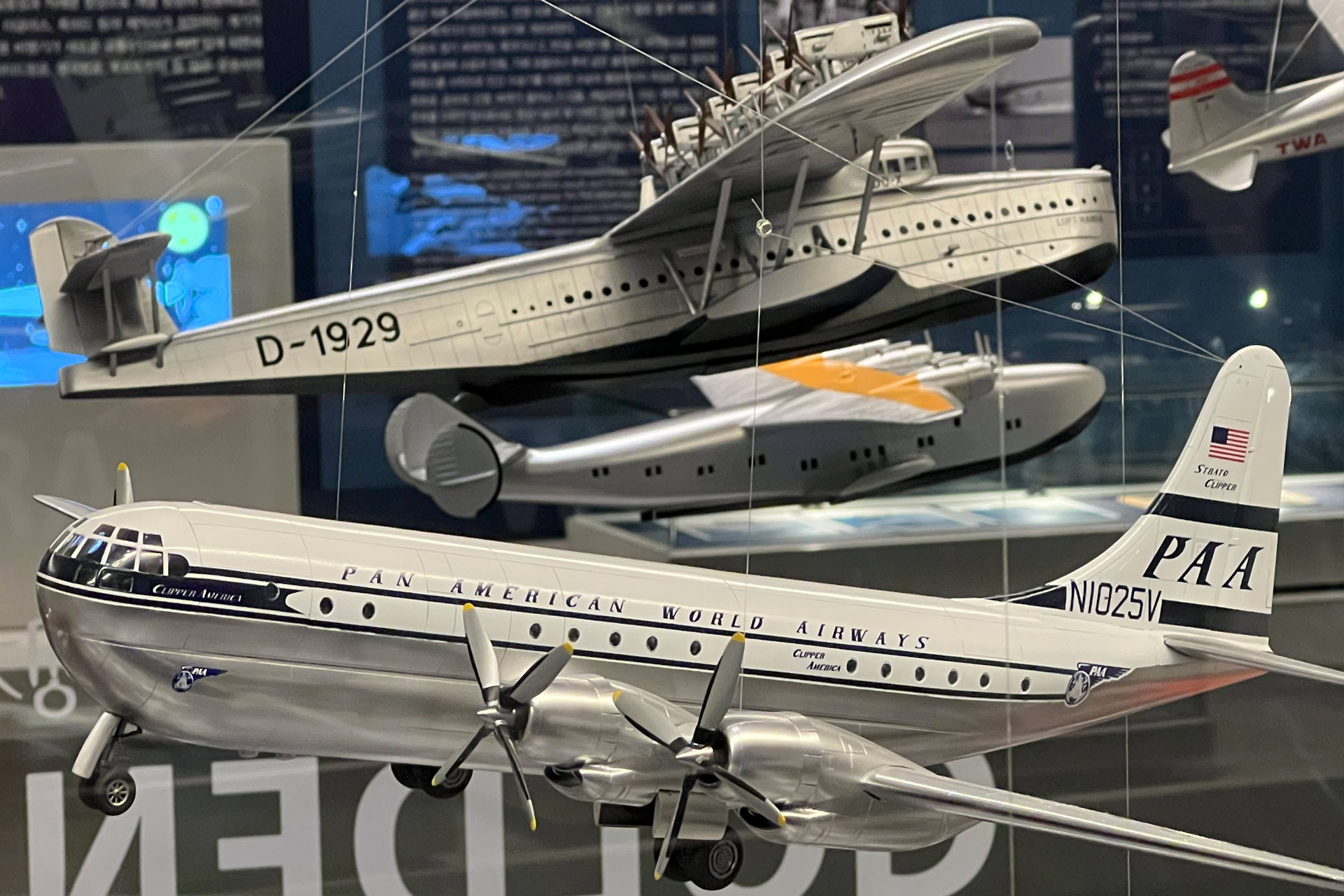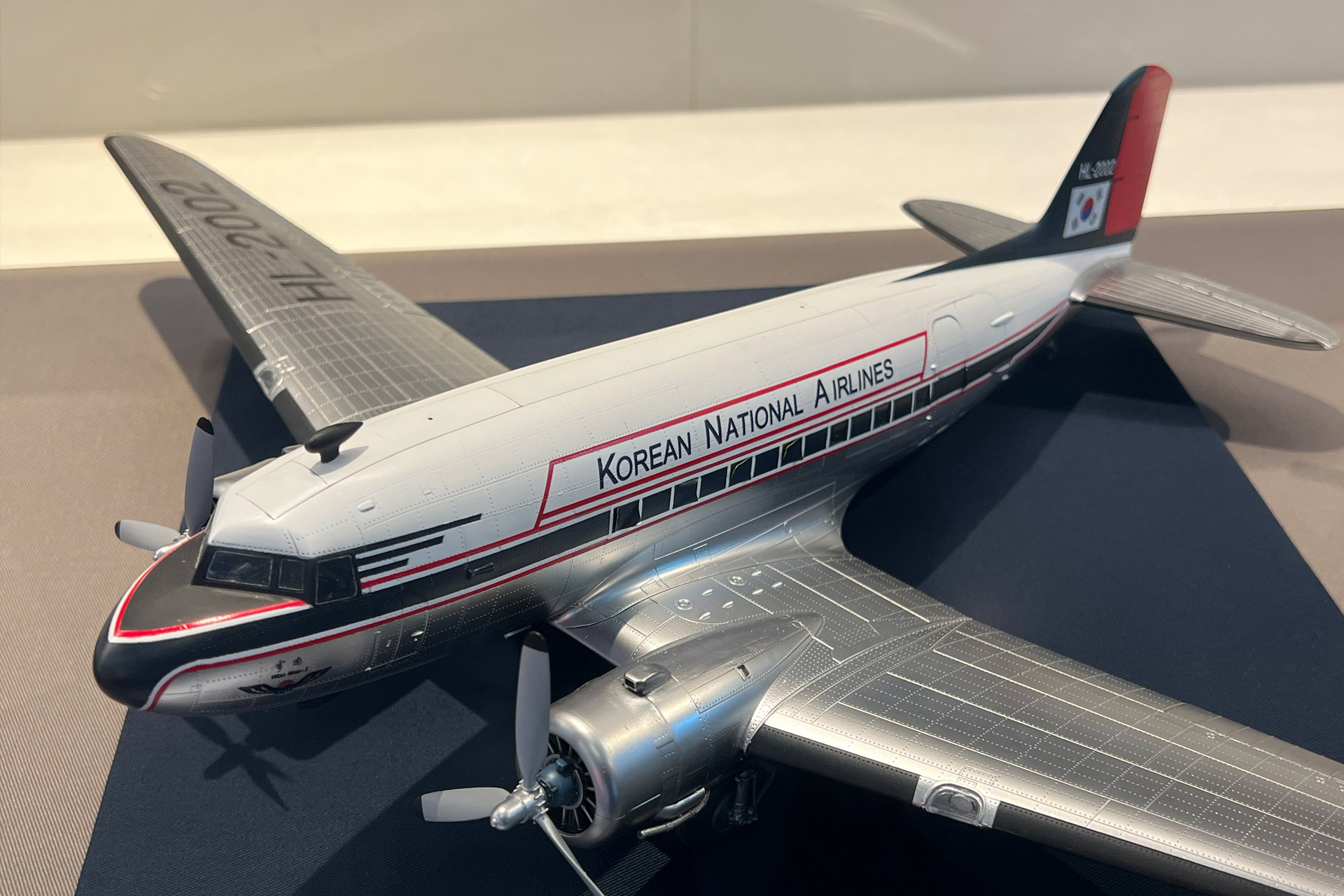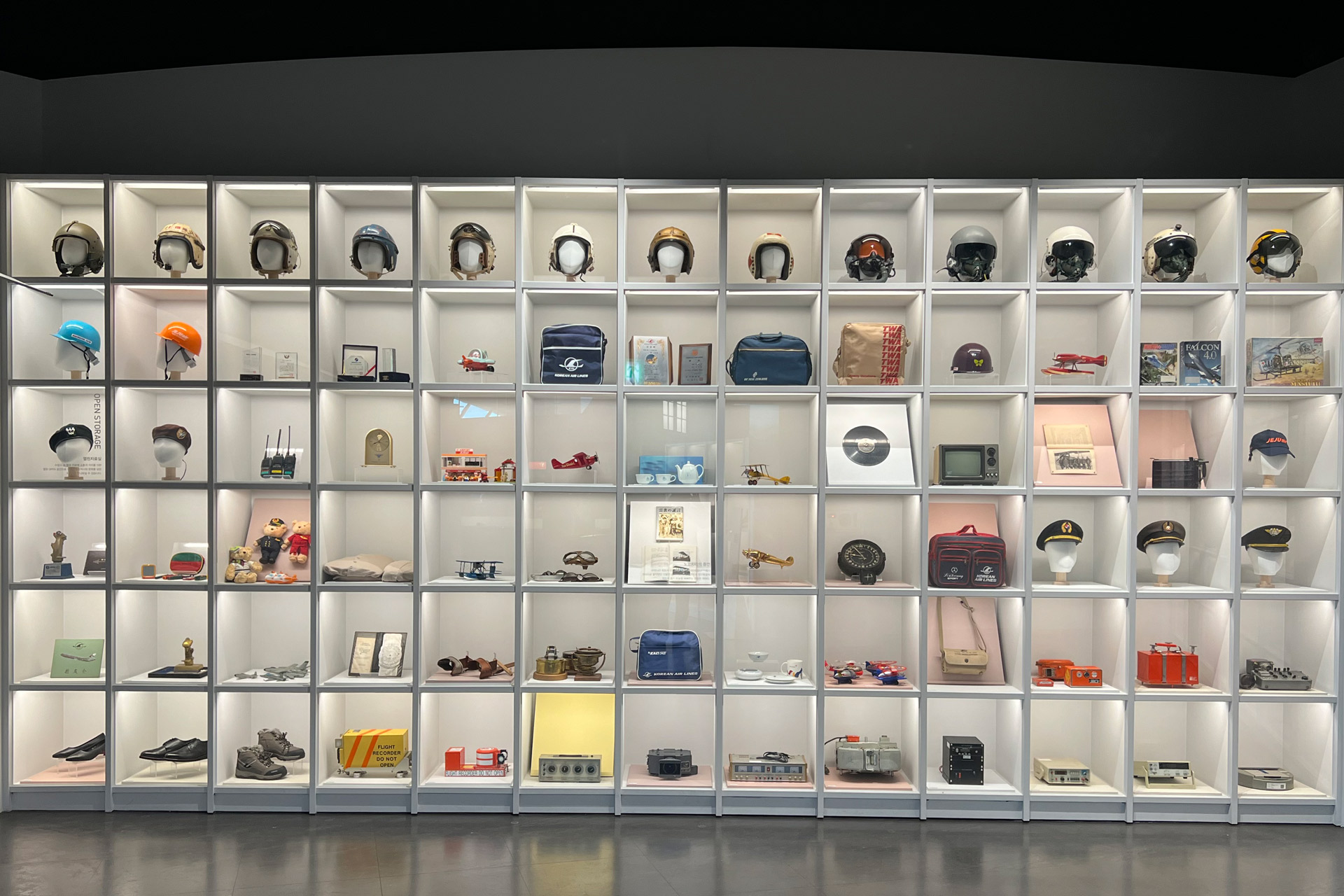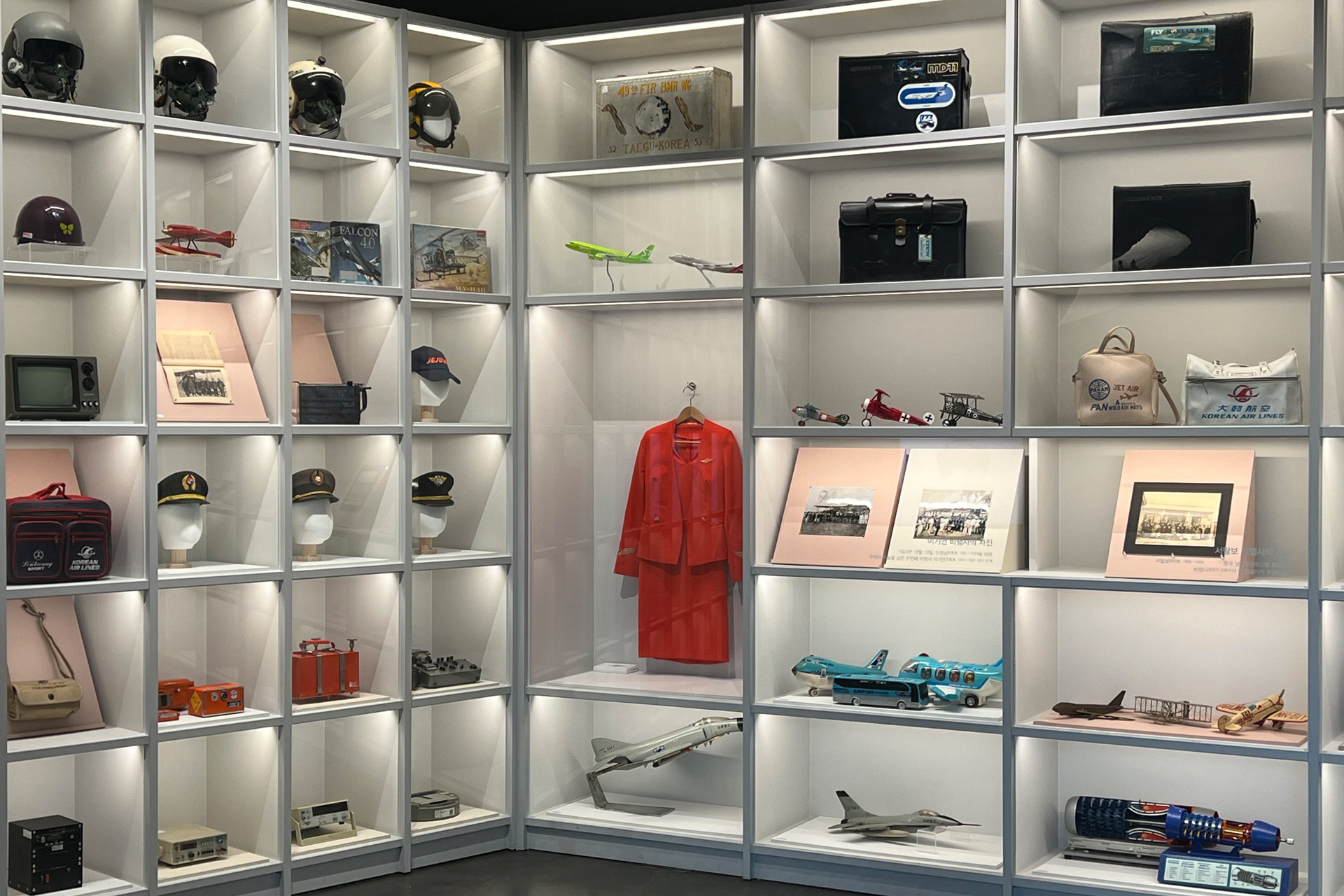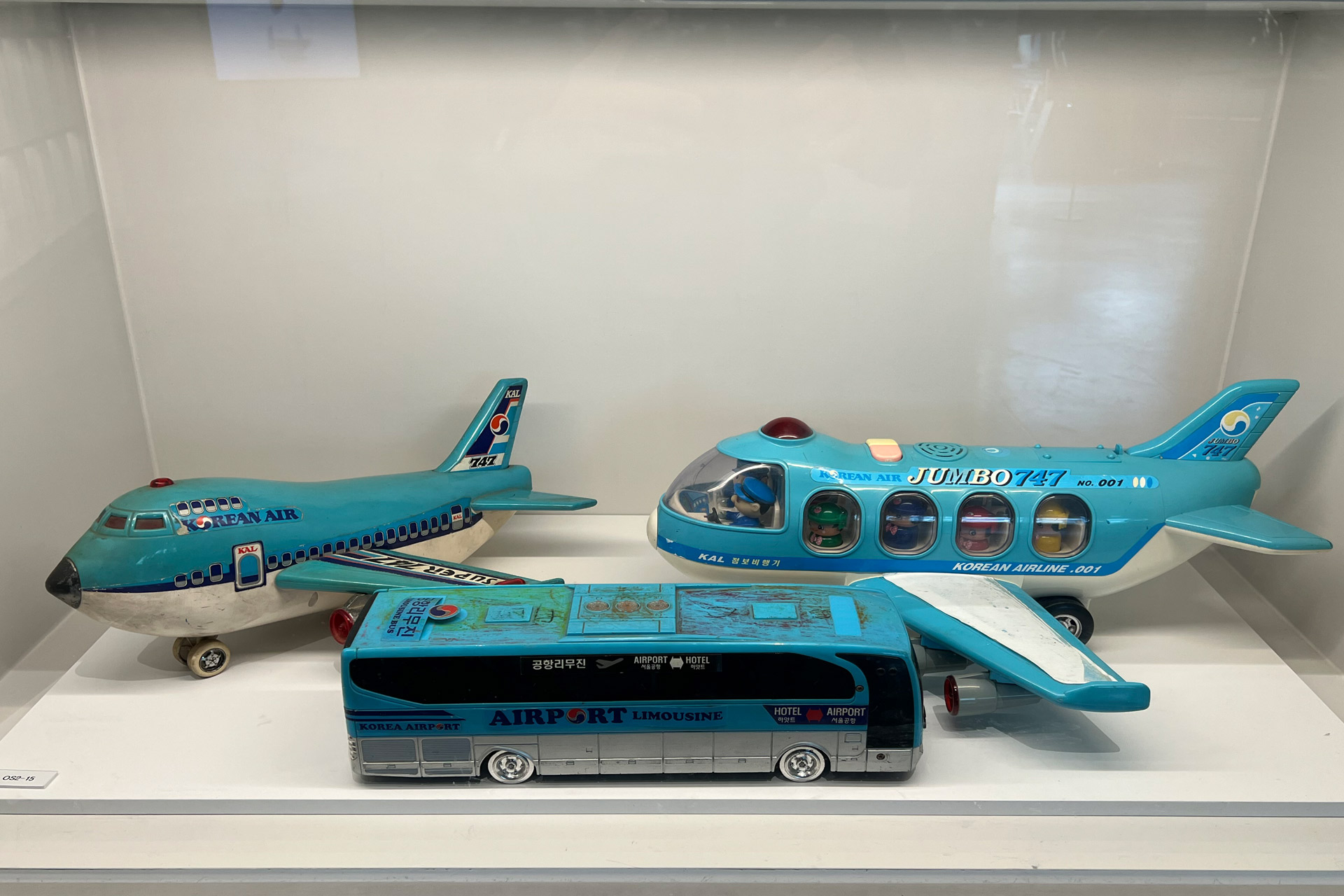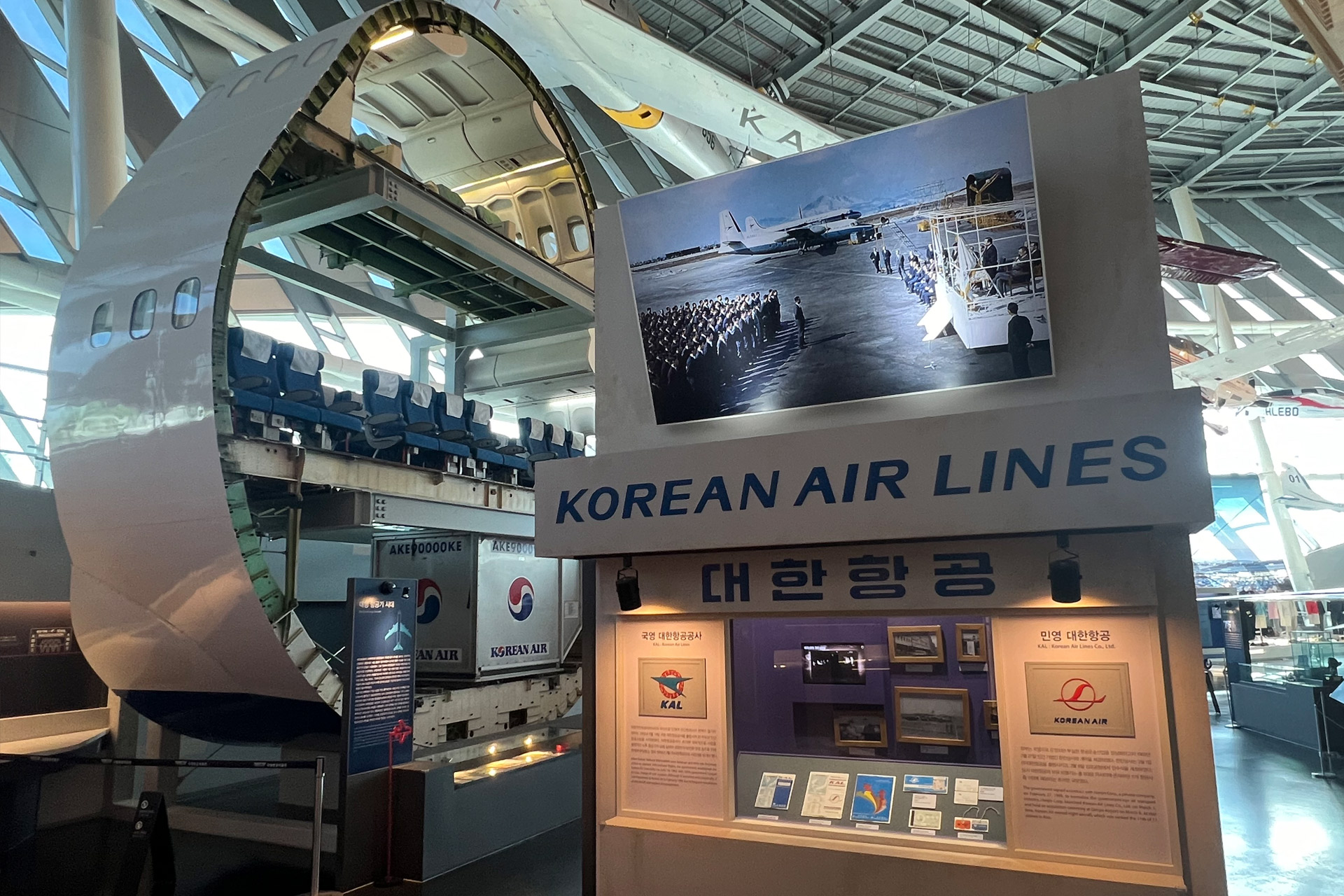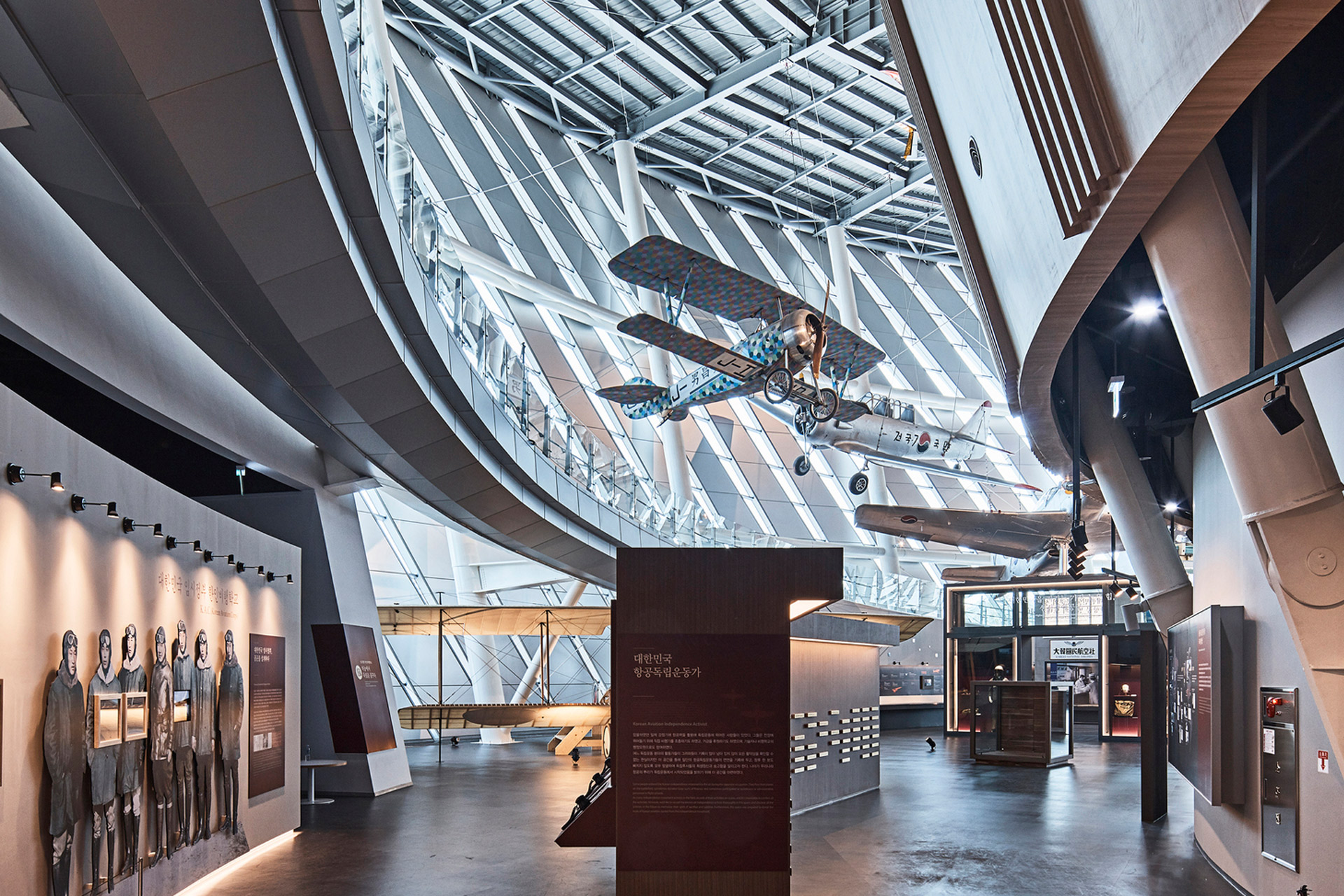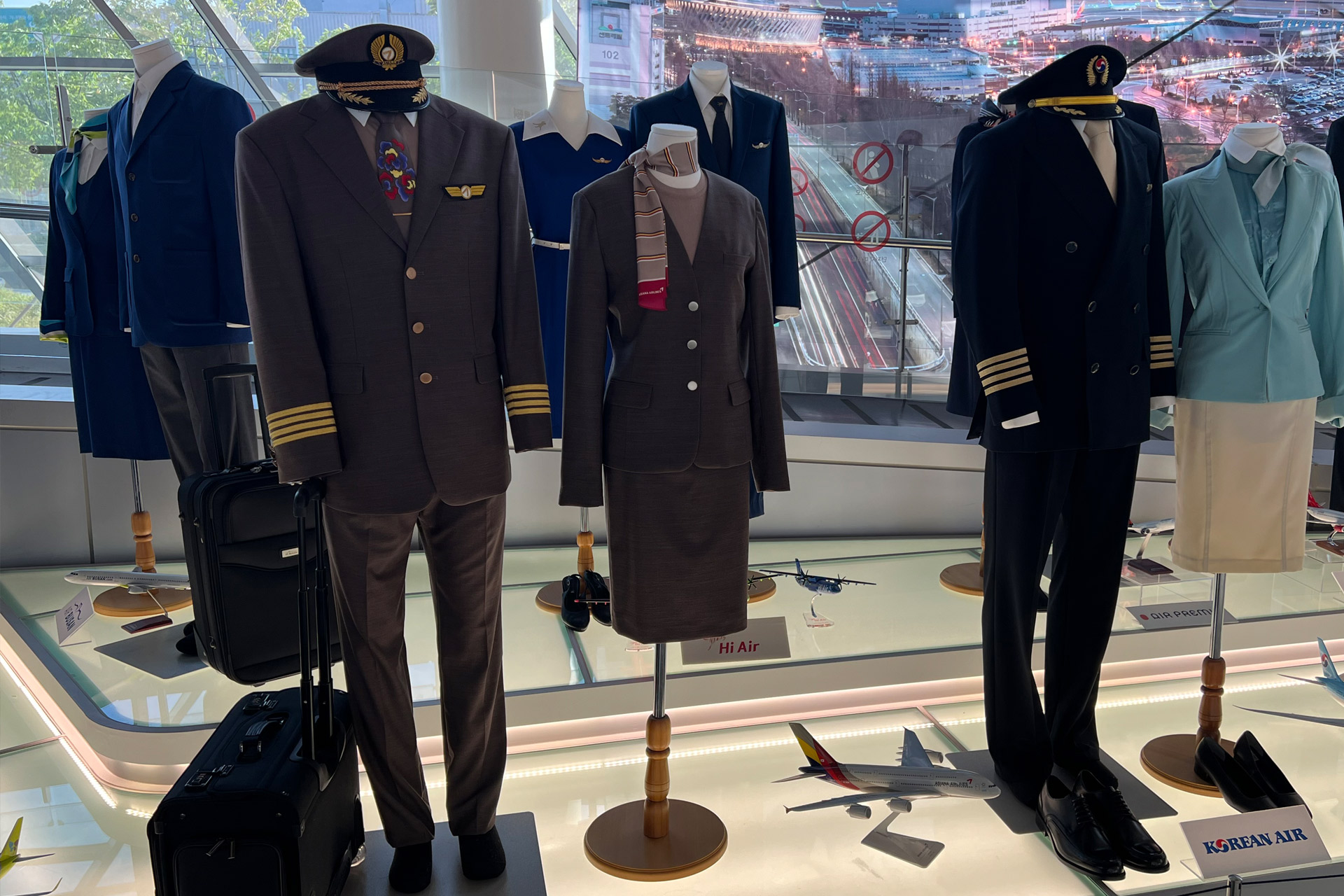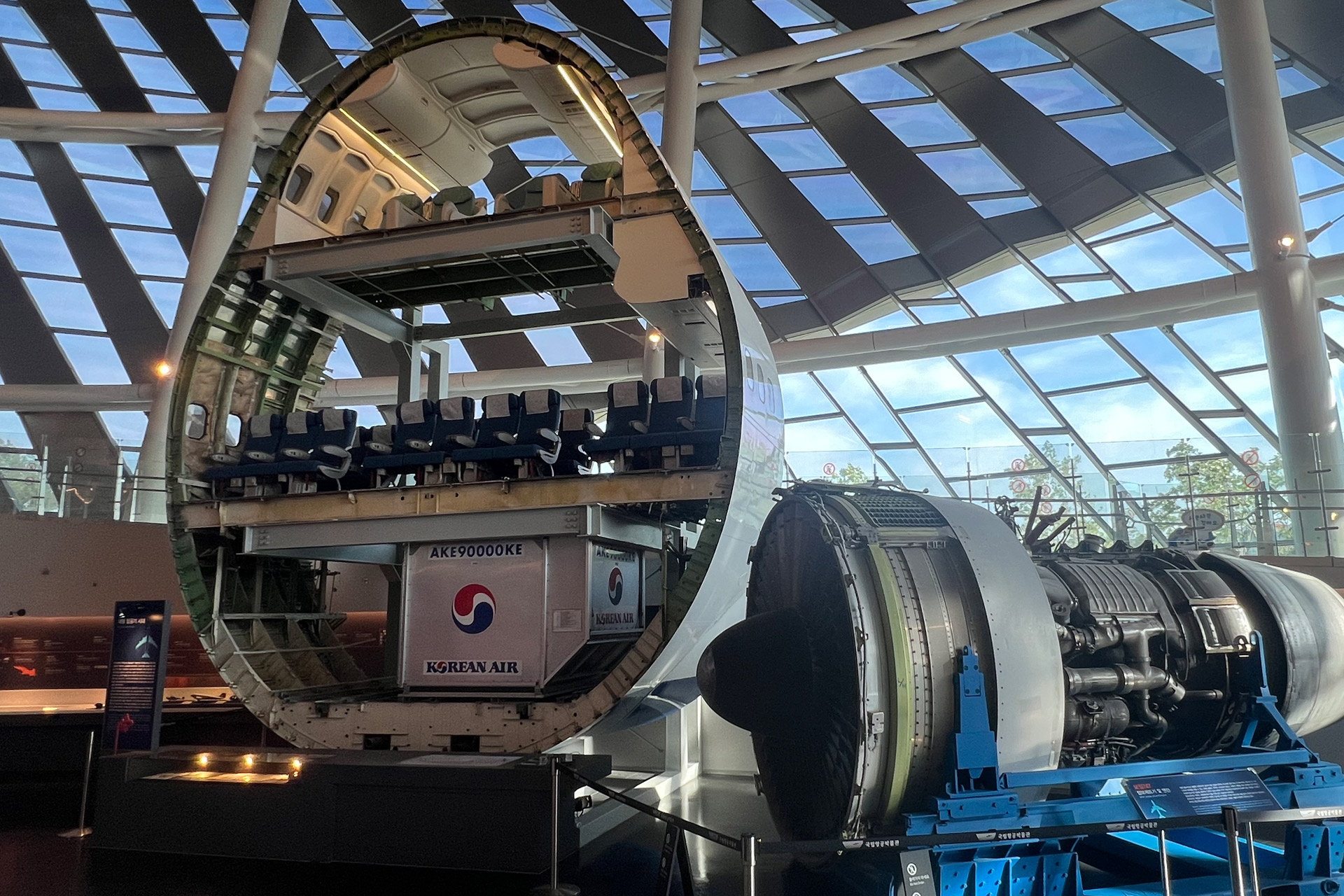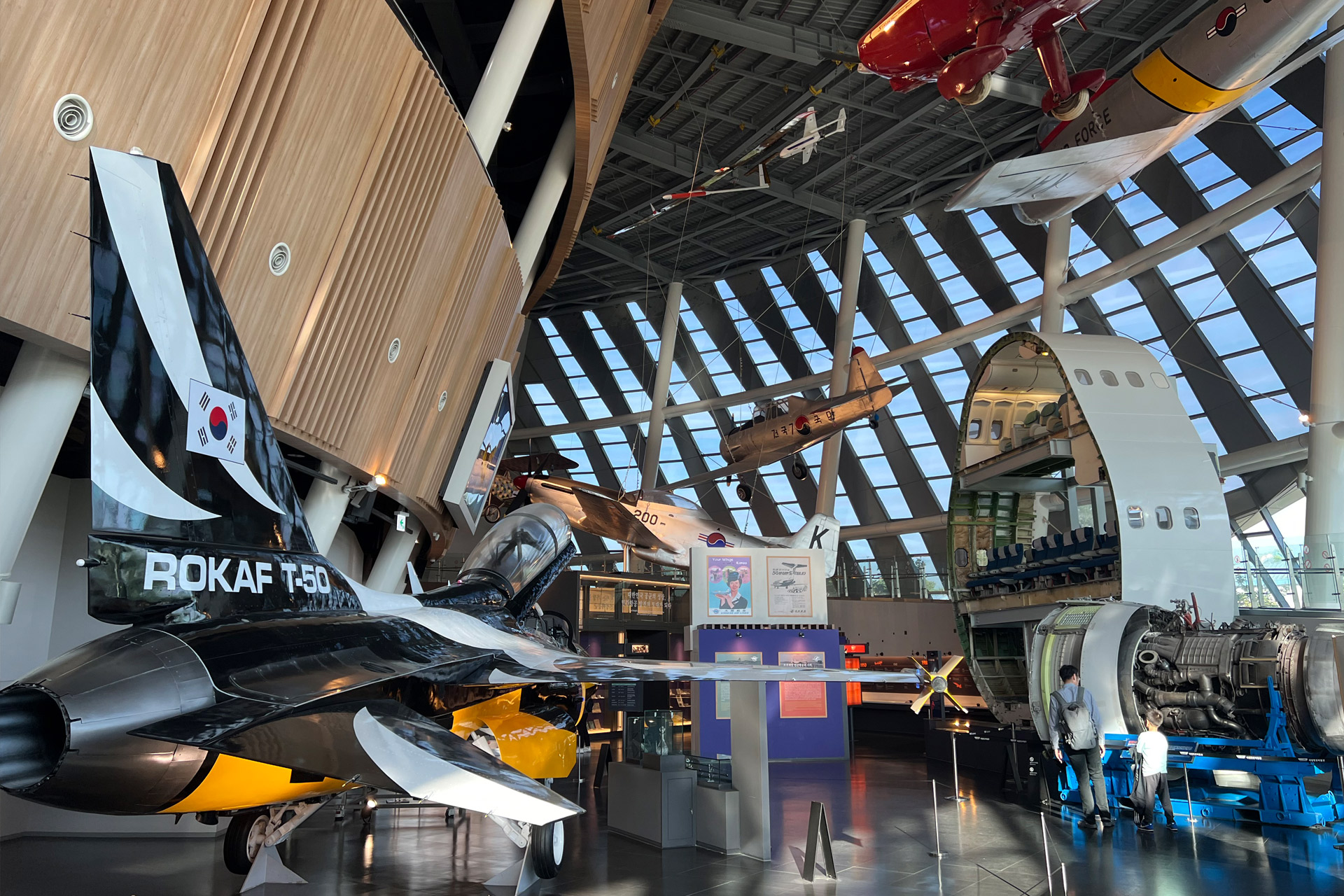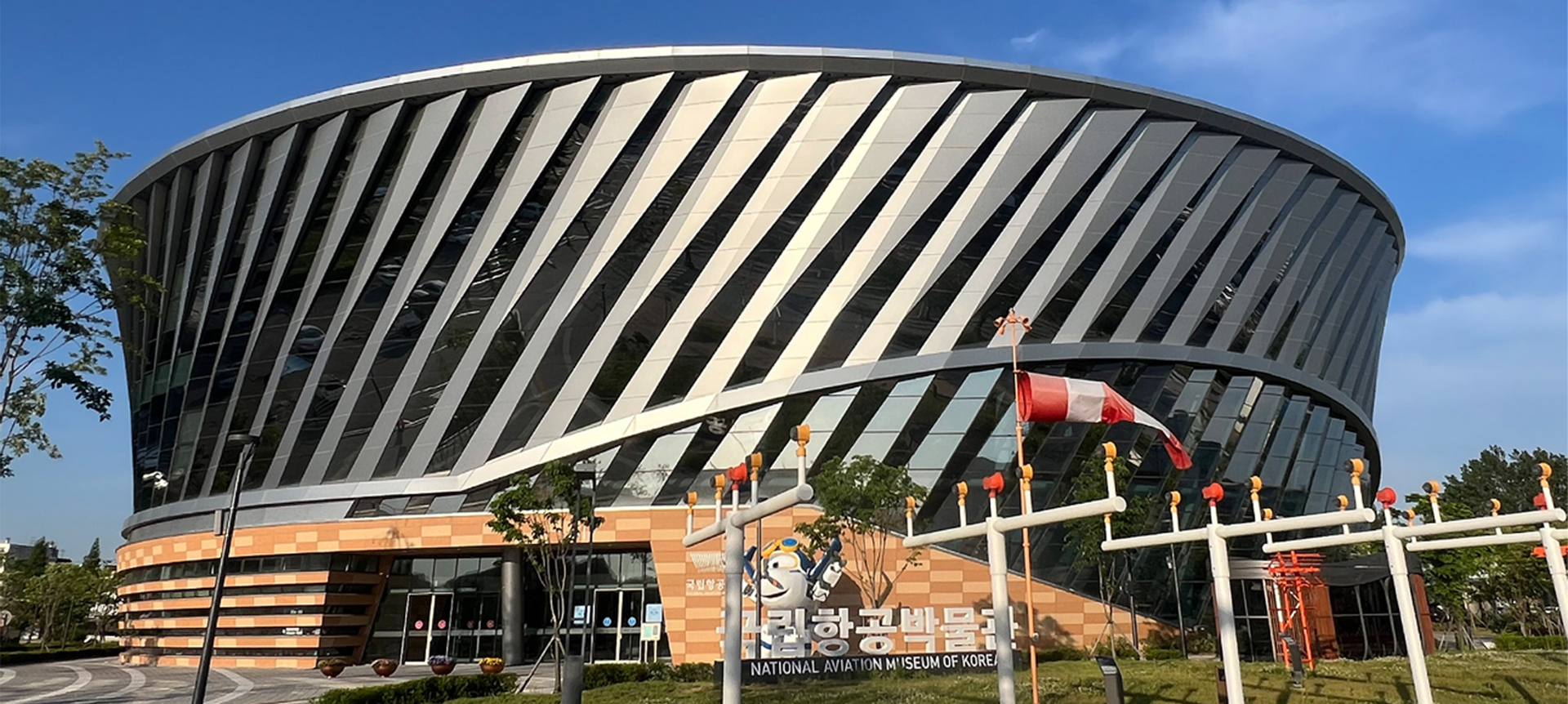
The fascination of flying, Korean style
The new national aviation museum of Korea at Seoul’s Gimpo airport is a jewel, both in content and architecture. The magnificent glass-metal building, mimicking a turbine, offers well-founded insights into aviation history with a special focus on Korea, hardly known in the West.
Newly opened aviation museums are extremely rare, anywhere on the globe. Mostly such venues are long-established private collections, kept alive by a few hardy volunteers and through donations. Or vast institutions with a long tradition and status and the respective funding. In South Korea it was different, a brand-new exhibition opened on July 5th, 2020, in the midst of the pandemic, the National Aviation Museum of Korea, located at Seoul’s Gimpo city airport. Commissioned and run by the Korean ministry of land, infrastructure and transport, no cost or effort was spared, and it shows. The newly erected complex with over 18,000 square meters of exhibition space makes a spectacular appearance: Lots of glass, metal and including a roof terrace with views of the adjacent Gimpo airport.
The idea is to attract especially young people and get them interested in aviation and its professions. Korea has almost no natural resources, and therefore focuses on its creative potential in all areas. At the same time, the still-divided country boasts of a surprisingly rich aviation history of its own, which the museum is supposed to keep alive. “South Korea is a powerhouse of global aviation today, and the national aviation museum wants to be one of the leading museums in this sector,” says its President Tae-hyun Ahn. The building is divided into three zones, the vast glass-covered atrium with original aircraft displayed in daylight, named “Air Turbine”. The second area is called “Air Show” and describes aviation history, for instance in a vast glass showcase in which aircraft scale-models are displayed, illustrating the evolution of flying machines. And then there is “Air Walk”, a passageway spiraling upwards, allowing changing views onto the exhibits and accessing galleries in the upper floors plus the entry to the rooftop terrace.
The Korean aviation museum, opened in 2020, is located adjacent to Seoul’s city airport in Gimpo. Boasting over 18,000 square meters of displays on three floors plus rooftop terrace, it probably is one of the biggest pure aviation museums globally.
Early Korean aviation history
In the 15th and 16th century, Italian Leonardo da Vinci dominated Western imagination of how to get humans into the air, as da Vinci tried to learn from birds and construct flying apparatuses to achieve that. But already in 1592 there was a plan for an aerial vehicle as well in Korea. Bigeo was the name of a flying wagon designed to take messages out of a fort besieged by the enemy during the Japanese invasion of Korea – through the air. Its objective was to carry two men over up to twelve kilometers by air. Flying was becoming more than a fantasy for people, they already came up with prospective technology to achieve that. After the first flight of the Wright Brothers in 1903, and while Korea was occupied by Japan, in 1913, a Japanese officer took off for the first documented flight on the Korean peninsula. But European pioneers of flight like Otto Lilienthal are also celebrated at the museum through valuable original documents, showing once more how deep this collection digs. From the very beginnings of Korean aviation, the replica of a training aircraft is exhibited, the French type Caudron G.3 flew already in 1922 in the country.
Korea has an aviation history reaching back as far as the 16th century, about which little is known in the West and that’s documented in the museum. A true eye-catcher is the vast glass showcase displaying scale-models of important aircraft in aviation history, for example of the flying boats Dornier Do-X and Boeing 314 or of the Stratocruiser.
Beginnings and boom in Korean civil aviation
Right after the Second World War and before the Korean War that followed (1950-1953), the first civil airlines were founded in Korea. In February 1946, privately owned Korean International Airlines started operations, in 1948 it was renamed Korean National Airlines (KNA). Its fleet was destroyed during the Korean War and later replaced, but the airline folded in 1961. Instead, in 1962 the first iteration of Korean Air Lines (KAL) was launched as a state-owned carrier. From 1964, its domestic and international flights operated from newly opened Gimpo airport, the location of today’s museum. In 1969, private Hanjin Group took over the company and gave it a boost through major investments, although it then faced a lack of passenger demand. It was in 1972 that the first direct route to the US was launched from Seoul, via Tokyo and Honolulu to Los Angeles. In May 1973, Korean Air received its first Boeing 747, deployed on Pacific routes. Only in 1988, a second Korean airline appeared in the form of Asiana (currently merger proceedings with Korean Air are under way). After the football (soccer) world championship 2002, jointly held in Japan and Korea, passenger numbers soared to and from Korea, and as a result, from 2005 onwards an array of low-cost-carriers (LCCs) started to appear. Currently there are no less than ten LCCs in South Korea, covering different destinations and regions, from just flying mostly domestic to others flying in the region or even serving just long-haul routes.
The walk-in, lamp-lit gallery room presents major artifacts from the museum depository in an attractive way, some avgeeks probably dream about having such a display at home. It’s worth it to have a closer look, there are many exciting things to discover, from a bright orange Aeroflot uniform, Jumbo toys to flight bags from the 1970s.
Exhibition highlights in the Korean aviation museum
One of the most eye-catching artifacts and the one with the biggest dimensions is the nearly two-meter-wide slice of the forward fuselage from a former Korean Air Boeing 747. On the main deck, two rows of Economy Class seats are installed in this space. It demonstrates in a fascinating way the unusual fuselage diameter of the legendary Jumbo as a big oval, showing how cleverly the upper deck and all its inner furnishings have been integrated. Hard to miss is also the original 747 jet engine right beside it and the Rokat T-50 light fighter/jet trainer aircraft across, a homemade Korean type, of which over 200 aircraft have so far been produced. Equally fascinating is also an entire room with a huge, larger-than-life shelf consisting of well -lit racks, very pointedly presenting artifacts from the museum’s depository. From pilot helmets to aircraft models, aircraft toys, flight bags to even a flight data recorder there is a lot to discover.
At the heart of the museum is the glass-covered atrium with original exhibition pieces from an engine and a slice of fuselage of a former Korean Air Boeing 747-400 to the Korean-made light combat/jet trainer aircraft Rokaf T-50. Through the variety of uniforms, the diversity of Korean airlines is documented, there are ten LCCs alone currently operating.
Text: Andreas Spaeth
Photos: Andreas Spaeth
Informations
The National Aviation Museum of Korea is located at Seoul’s Gimpo airport. It is within easy reach from the city with subway lines 5 and 9, proceeding to the international airport at Incheon in the other direction. This makes a museum visit possible even within a half-day stopover. From Gimpo subway station the museum is very well signposted, one has to follow the indicated directions to the arrivals level and then exiting the building as the signs point out, from there it’s not far. Alternatively, there is a shuttle bus from the arrivals level as well. The museum is open Tuesday to Friday from 10am to 6pm, entry is free.
More at:
www.aviation.or.kr/eng/index.do

